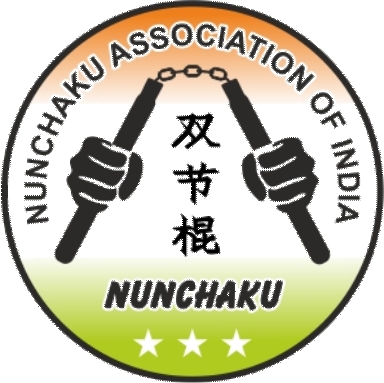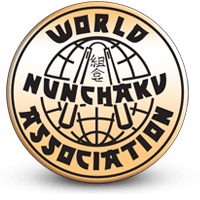Bruce Lee Enduring Influence: From Martial Arts to Pop Culture
About Bruee Lee
Born on November 27, 1940, as Lee Jun-fan, Bruce Lee was a prominent Hong Kong-American martial artist and actor who left an indelible mark on both Hong Kong and the United States. Renowned as the founder of Jeet Kune Do, a martial arts philosophy blending various combat disciplines, he is often acknowledged for laying the foundation for contemporary mixed martial arts (MMA). Widely regarded as the most influential martial artist in history, Bruce Lee is a 20th-century pop culture icon, credited with bridging the cultural gap between the East and the West. His legacy extends to the promotion of Hong Kong action cinema and a transformative impact on the portrayal of Chinese individuals in American films. Tragically, Bruce Lee’s life concluded on July 20, 1973, but his enduring influence persists.
Bruee Lee Career and Education
- Bruce Lee, born in 1940, was introduced to cinema at a young age due to his father’s fame as a Cantonese opera star.
- His first film role was as a baby in “Golden Gate Girl,” and he adopted the Chinese stage name “Lee the Little Dragon.”
- Lee co-starred with his father in “The Kid” at the age of nine and appeared in 20 films by the time he was 18.
- After attending various schools in Hong Kong, including Tak Sun School and La Salle College, Lee faced academic and conduct issues, leading to a transfer to St. Francis Xavier’s College.
- In 1953, Lee’s friend William Cheung introduced him to Ip Man for Wing Chun training, despite initial resistance due to Lee’s mixed ancestry.
- Lee faced challenges in Wing Chun training, with most students refusing to train with him due to his mixed ancestry. However, he continued private training with Ip Man and others.
- In 1958, Lee won the Hong Kong schools boxing tournament and excelled in cha-cha dancing, showcasing his diverse talents.
- In 1959, Lee moved to the United States to live with his sister and continued his high school education in Seattle, working as a live-in waiter.
- Lee started teaching martial arts in 1959, calling it Jun Fan Gung Fu. He later founded the Lee Jun Fan Gung Fu Institute in Seattle.
- Lee’s martial arts philosophy evolved into Jeet Kune Do, emphasizing practicality, flexibility, speed, and efficiency. He achieved fame in Hollywood with roles like “The Green Hornet” and “Enter the Dragon,” solidifying his legacy as a martial arts legend.
Martial arts
- Martial Arts Background:
- Bruce Lee’s introduction to martial arts began with learning Wu-style tai chi from his father.
- He became involved in Hong Kong gang conflicts during his teens, leading to frequent street fights.
- His significant influence was Wing Chun, which he studied under Yip Man at the age of 16 after losing in gang fights.
- Lee trained in various Chinese martial arts styles and boxing, winning the Hong Kong schools boxing tournament in 1958.
- Jeet Kune Do Demonstrations:
- Lee demonstrated Jeet Kune Do at the Long Beach International Karate Championships in 1964 and 1968.
- Demonstrations included quick eye strikes, the one-inch punch, blindfolded chi sao drills, and full-contact sparring bouts.
- He emphasized the “style of no style” and incorporated Ali-inspired footwork into his own martial arts.
- Grappling and Cross-Training:
- Lee favored cross-training between different fighting styles and had a keen interest in grappling.
- He trained with judo practitioners, including Gene LeBell, and incorporated judo techniques into Jeet Kune Do.
- Lee showcased grappling moves in his films, such as Way of the Dragon and Enter the Dragon.
- Street Fighting and Hybrid Style:
- Lee was influenced by Hong Kong’s street fighting culture, engaging in rooftop fights and combining techniques from various martial arts schools.
- His return to Hong Kong in the early 1970s led to locals challenging him to street fights, contributing to his reputation.
- Lee developed a hybrid martial arts style, drawing from different techniques and styles.
- Physical Fitness and Nutrition:
- Lee was known for his exceptional physical fitness and vigor, achieved through a dedicated fitness regimen.
- His approach included muscular strength, endurance, cardiovascular fitness, and flexibility.
- Lee emphasized the importance of mental and spiritual preparation alongside physical training.
- He adopted a disciplined diet, avoiding baked goods and refined flour, focusing on high-protein, vitamin-rich foods, and Asian cuisin.
Personal life
- Names:
- Cantonese Birth Name:
- Bruce Lee’s Cantonese birth name was Lee Jun-fan.
- His mother initially named him Sai-fon, meaning “small phoenix,” but changed it to Lee Jun-fan, which homophonically means “return again.”
- Family:
- Lee’s father, Lee Hoi-chuen, was a prominent Cantonese opera and film actor.
- His mother, Grace Ho, was from the influential Ho-tung clan, and Lee grew up in an affluent environment despite the overcrowded and dangerous neighborhood.
- Lee had three siblings: Phoebe, Agnes, Peter, and Robert.
- Children and Family Legacy:
- Lee married Linda Emery in 1964, and they had two children: Brandon (1965–1993) and Shannon (born 1969).
- Brandon Lee followed in his father’s footsteps and pursued a career in acting but tragically died in 1993 due to an accidental shooting on the set of “The Crow.”
- Shannon Lee studied Jeet Kune Do and martial arts in her youth, later promoting her father’s martial art.
Bruee lee Death
Bruce Lee’s untimely death occurred on July 20, 1973, in Hong Kong. Initially diagnosed with cerebral edema, he collapsed during a film session in May. On the day of his death, after complaining of a headache, Lee took Equagesic, containing meprobamate. Found unresponsive, he was rushed to the hospital but declared dead on arrival. Autopsy revealed cerebral edema, and Equagesic was detected. The official cause was “death by misadventure.” Various theories arose, including an allergic reaction. In 2018, a biography suggested heat stroke as a factor. A 2022 study proposed fatal hyponatremia due to multiple risk factors.


